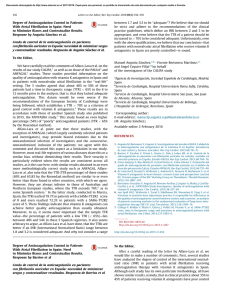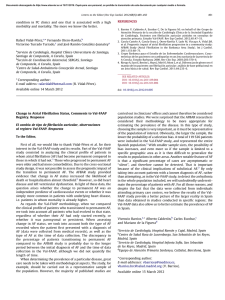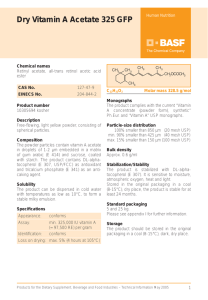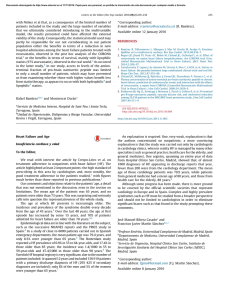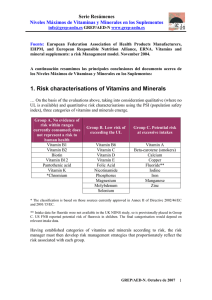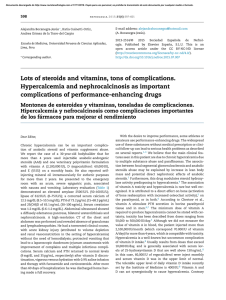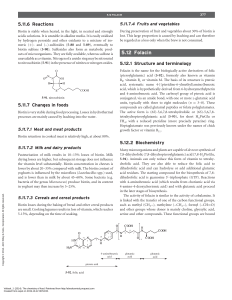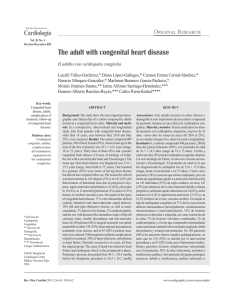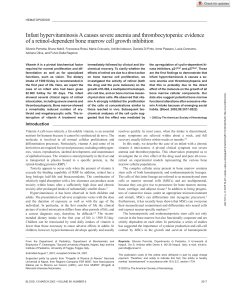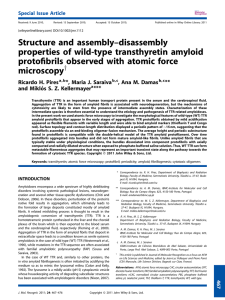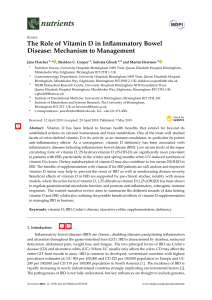Degree of Anticoagulation Control in Patients With Atrial
Anuncio
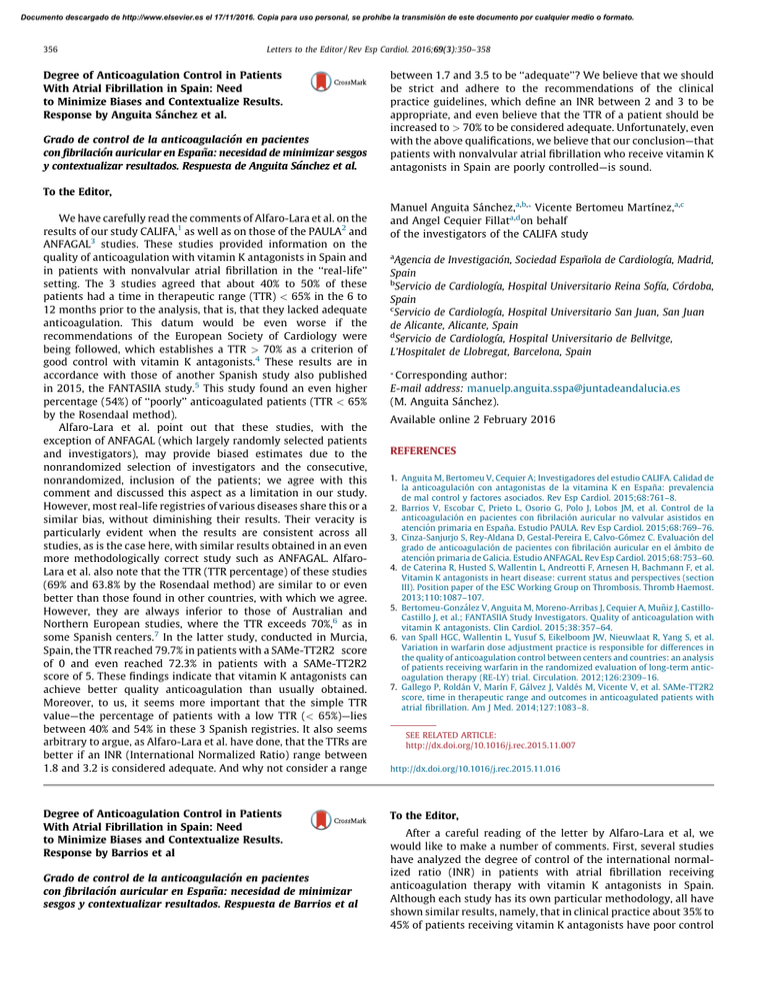
Documento descargado de http://www.elsevier.es el 17/11/2016. Copia para uso personal, se prohíbe la transmisión de este documento por cualquier medio o formato. 356 Letters to the Editor / Rev Esp Cardiol. 2016;69(3):350–358 Degree of Anticoagulation Control in Patients With Atrial Fibrillation in Spain: Need to Minimize Biases and Contextualize Results. Response by Anguita Sánchez et al. Grado de control de la anticoagulación en pacientes con fibrilación auricular en España: necesidad de minimizar sesgos y contextualizar resultados. Respuesta de Anguita Sánchez et al. between 1.7 and 3.5 to be ‘‘adequate’’? We believe that we should be strict and adhere to the recommendations of the clinical practice guidelines, which define an INR between 2 and 3 to be appropriate, and even believe that the TTR of a patient should be increased to > 70% to be considered adequate. Unfortunately, even with the above qualifications, we believe that our conclusion—that patients with nonvalvular atrial fibrillation who receive vitamin K antagonists in Spain are poorly controlled—is sound. To the Editor, We have carefully read the comments of Alfaro-Lara et al. on the results of our study CALIFA,1 as well as on those of the PAULA2 and ANFAGAL3 studies. These studies provided information on the quality of anticoagulation with vitamin K antagonists in Spain and in patients with nonvalvular atrial fibrillation in the ‘‘real-life’’ setting. The 3 studies agreed that about 40% to 50% of these patients had a time in therapeutic range (TTR) < 65% in the 6 to 12 months prior to the analysis, that is, that they lacked adequate anticoagulation. This datum would be even worse if the recommendations of the European Society of Cardiology were being followed, which establishes a TTR > 70% as a criterion of good control with vitamin K antagonists.4 These results are in accordance with those of another Spanish study also published in 2015, the FANTASIIA study.5 This study found an even higher percentage (54%) of ‘‘poorly’’ anticoagulated patients (TTR < 65% by the Rosendaal method). Alfaro-Lara et al. point out that these studies, with the exception of ANFAGAL (which largely randomly selected patients and investigators), may provide biased estimates due to the nonrandomized selection of investigators and the consecutive, nonrandomized, inclusion of the patients; we agree with this comment and discussed this aspect as a limitation in our study. However, most real-life registries of various diseases share this or a similar bias, without diminishing their results. Their veracity is particularly evident when the results are consistent across all studies, as is the case here, with similar results obtained in an even more methodologically correct study such as ANFAGAL. AlfaroLara et al. also note that the TTR (TTR percentage) of these studies (69% and 63.8% by the Rosendaal method) are similar to or even better than those found in other countries, with which we agree. However, they are always inferior to those of Australian and Northern European studies, where the TTR exceeds 70%,6 as in some Spanish centers.7 In the latter study, conducted in Murcia, Spain, the TTR reached 79.7% in patients with a SAMe-TT2R2 score of 0 and even reached 72.3% in patients with a SAMe-TT2R2 score of 5. These findings indicate that vitamin K antagonists can achieve better quality anticoagulation than usually obtained. Moreover, to us, it seems more important that the simple TTR value—the percentage of patients with a low TTR (< 65%)—lies between 40% and 54% in these 3 Spanish registries. It also seems arbitrary to argue, as Alfaro-Lara et al. have done, that the TTRs are better if an INR (International Normalized Ratio) range between 1.8 and 3.2 is considered adequate. And why not consider a range Degree of Anticoagulation Control in Patients With Atrial Fibrillation in Spain: Need to Minimize Biases and Contextualize Results. Response by Barrios et al Grado de control de la anticoagulación en pacientes con fibrilación auricular en España: necesidad de minimizar sesgos y contextualizar resultados. Respuesta de Barrios et al Manuel Anguita Sánchez,a,b,* Vicente Bertomeu Martı́nez,a,c and Angel Cequier Fillata,don behalf of the investigators of the CALIFA study a Agencia de Investigación, Sociedad Española de Cardiologı´a, Madrid, Spain b Servicio de Cardiologı´a, Hospital Universitario Reina Sofı´a, Córdoba, Spain c Servicio de Cardiologı´a, Hospital Universitario San Juan, San Juan de Alicante, Alicante, Spain d Servicio de Cardiologı´a, Hospital Universitario de Bellvitge, L’Hospitalet de Llobregat, Barcelona, Spain * Corresponding author: E-mail address: [email protected] (M. Anguita Sánchez). Available online 2 February 2016 REFERENCES 1. Anguita M, Bertomeu V, Cequier A; Investigadores del estudio CALIFA. Calidad de la anticoagulación con antagonistas de la vitamina K en España: prevalencia de mal control y factores asociados. Rev Esp Cardiol. 2015;68:761–8. 2. Barrios V, Escobar C, Prieto L, Osorio G, Polo J, Lobos JM, et al. Control de la anticoagulación en pacientes con fibrilación auricular no valvular asistidos en atención primaria en España. Estudio PAULA. Rev Esp Cardiol. 2015;68:769–76. 3. Cinza-Sanjurjo S, Rey-Aldana D, Gestal-Pereira E, Calvo-Gómez C. Evaluación del grado de anticoagulación de pacientes con fibrilación auricular en el ámbito de atención primaria de Galicia. Estudio ANFAGAL. Rev Esp Cardiol. 2015;68:753–60. 4. de Caterina R, Husted S, Wallentin L, Andreotti F, Arnesen H, Bachmann F, et al. Vitamin K antagonists in heart disease: current status and perspectives (section III). Position paper of the ESC Working Group on Thrombosis. Thromb Haemost. 2013;110:1087–107. 5. Bertomeu-González V, Anguita M, Moreno-Arribas J, Cequier A, Muñiz J, CastilloCastillo J, et al.; FANTASIIA Study Investigators. Quality of anticoagulation with vitamin K antagonists. Clin Cardiol. 2015;38:357–64. 6. van Spall HGC, Wallentin L, Yusuf S, Eikelboom JW, Nieuwlaat R, Yang S, et al. Variation in warfarin dose adjustment practice is responsible for differences in the quality of anticoagulation control between centers and countries: an analysis of patients receiving warfarin in the randomized evaluation of long-term anticoagulation therapy (RE-LY) trial. Circulation. 2012;126:2309–16. 7. Gallego P, Roldán V, Marı́n F, Gálvez J, Valdés M, Vicente V, et al. SAMe-TT2R2 score, time in therapeutic range and outcomes in anticoagulated patients with atrial fibrillation. Am J Med. 2014;127:1083–8. SEE RELATED ARTICLE: http://dx.doi.org/10.1016/j.rec.2015.11.007 http://dx.doi.org/10.1016/j.rec.2015.11.016 To the Editor, After a careful reading of the letter by Alfaro-Lara et al, we would like to make a number of comments. First, several studies have analyzed the degree of control of the international normalized ratio (INR) in patients with atrial fibrillation receiving anticoagulation therapy with vitamin K antagonists in Spain. Although each study has its own particular methodology, all have shown similar results, namely, that in clinical practice about 35% to 45% of patients receiving vitamin K antagonists have poor control
